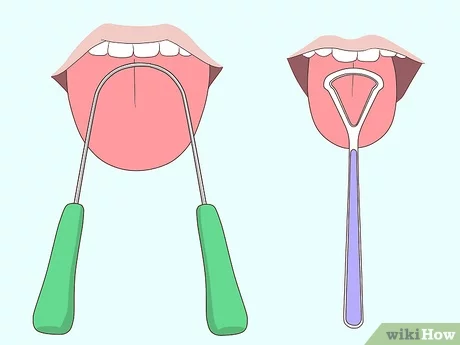
Maintaining a clean tongue cleaner (or tongue scraper) is essential for hygiene and optimal performance. This simple tool plays a crucial role in your oral care routine by removing bacteria, food particles, and dead cells from the surface of your tongue, which helps reduce bad breath and improve overall oral health. However, just like any other oral care tool, a tongue cleaner needs proper maintenance to keep it working effectively. Here’s a step-by-step guide on how to clean your tongue cleaner.
Rinse Immediately After Use
One of the easiest ways to maintain a clean tongue scraper is to rinse it immediately after each use. Simply hold it under warm running water to wash away any residue that may have been scraped off your tongue. This step prevents bacteria from growing on the surface and helps keep your tongue cleaner ready for the next use.
Wash with Soap and Water
For a more thorough clean, washing your tongue scraper with soap and warm water is recommended. Here’s how to do it:
- Use a mild liquid soap and a soft cloth or sponge.
- Apply a small amount of soap to the cloth or sponge.
- Gently scrub the entire surface of the tongue cleaner, paying attention to any grooves or crevices where buildup may accumulate.
- Rinse thoroughly under warm water to remove any soap residue.
This ensures that your tongue cleaner remains free from any lingering bacteria or dirt.
Disinfect for Extra Cleanliness
If you’re looking for a deeper clean, disinfect your tongue cleaner once in a while. You can use either mouthwash or hydrogen peroxide to sanitize the tool:
- Prepare a solution of warm water and mouthwash (or hydrogen peroxide).
- Soak the tongue cleaner in this solution for a few minutes.
- After soaking, rinse the tongue cleaner thoroughly with water to remove any remaining solution.
Disinfecting your tongue cleaner every week or two can help eliminate germs and prevent any unpleasant odors.
Dry Completely
After cleaning your tongue cleaner, it’s important to dry it completely. Leave it to air dry, or use a clean, dry towel to pat it down. Storing a wet tongue cleaner can encourage the growth of bacteria, so ensure it’s thoroughly dry before putting it away in a storage case or drawer.
Deep Clean Weekly
To ensure your tongue cleaner remains in top condition, give it a deep clean once a week. This can be done by using a soft brush to scrub the entire surface gently. You can also soak it in a disinfecting solution for a more intense clean. If your tongue cleaner is made of metal, you may want to pay extra attention to any nooks and crannies where buildup could be harder to remove.
Proper Storage
When not in use, store your tongue cleaner in a clean, dry place. If it came with a protective case, keep it inside to prevent any dust or bacteria from contaminating it. Avoid storing it in a damp environment, as this can lead to the growth of bacteria or mold.
Conclusion
A clean tongue cleaner not only ensures a more effective oral hygiene routine but also promotes better overall health by reducing the growth of harmful bacteria in your mouth. By following these simple cleaning steps—rinsing immediately after use, washing with soap and water, disinfecting regularly, drying thoroughly, and storing properly—you’ll extend the life of your tongue cleaner while keeping it hygienic and ready for use.
